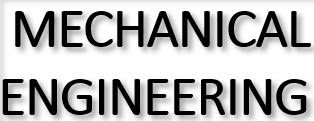Hi Guys in this article we try to understand the basic information of Sap Warehouse Management Benefits so that we be enhance our knowledge and whenever we work in this module this will helpful so without wasting of time let's start the further information,
Sap Warehouse Management Benefits
SAP Warehouse Management (WM) offers numerous benefits that enhance the efficiency and accuracy of warehouse operations. Below some key benefits of SAP WM,
1. Improved Inventory Accuracy
SAP WM provides real-time tracking of stock at the bin level, allowing for precise inventory management.
This minimizes discrepancies and ensures that physical stock matches the system records, leading to more accurate stock levels.
2. Efficient Storage and Space Utilization
SAP WM optimizes space utilization by managing the placement of materials in the most efficient storage bins based on material characteristics, size, and demand.
This ensures better organization of the warehouse and minimizes wasted space.
3. Streamlined Warehouse Processes
The system helps streamline core processes such as goods receipt, goods issue, stock transfers, and picking.
Automated workflows reduce manual tasks, speeding up warehouse operations and minimizing errors.
4. Enhanced Picking and Packing
SAP WM allows for efficient picking strategies such as first in, first out (FIFO) or last in, first out (LIFO), improving the accuracy and speed of order fulfillment.
It can also manage batch picking and optimize the packing process to ensure that orders are processed more effectively.
5. Better Control Over Material Movements
Every material movement within the warehouse is tracked and recorded, allowing for complete transparency.
This level of control reduces the likelihood of lost or misplaced goods and improves overall operational efficiency.
6. Integration with Other SAP Modules
SAP WM is fully integrated with other modules like SAP MM (Materials Management), SAP SD (Sales and Distribution), and SAP PP (Production Planning), ensuring smooth coordination across the supply chain.
This integration helps in automating processes like goods receipt, goods issue, and production orders, linking warehouse operations to procurement, sales, and production activities.
7. Improved Labor Productivity
By automating manual tasks and optimizing material movements, SAP WM helps warehouse staff work more efficiently.
Task prioritization and better workflow coordination reduce the time spent on material handling and increase throughput.
8. Reduction in Operating Costs
The efficiency gained from optimized space utilization, streamlined processes, and fewer errors results in lower operational costs.
SAP WM helps reduce overheads related to inventory management, labor, and storage space.
9. Support for Advanced Warehouse Functions
SAP WM supports advanced functions like wave picking, cross-docking, and yard management, enabling businesses to handle complex warehouse operations with ease.
It also supports automatic replenishment and cycle counting, ensuring that stock levels are maintained without manual intervention.
10. Improved Customer Service
By enhancing the speed and accuracy of picking, packing, and shipping, SAP WM helps ensure that orders are fulfilled on time, leading to higher customer satisfaction.
Real-time stock visibility allows better communication with customers regarding product availability and delivery schedules.
Some topic related Questions:
Types of warehouse management systems
Warehouse Management Systems (WMS) are critical tools in modern supply chains, streamlining operations, improving inventory accuracy, and ensuring timely fulfillment. Based on business needs, technical requirements, and infrastructure, WMS can be classified into several types. Let’s explore the most common types of WMS and their unique characteristics.
1. Standalone WMS
Overview:
A Standalone WMS is a dedicated software solution focused purely on warehouse operations. It is independent of other systems and offers core features such as inventory tracking, picking, receiving, and shipping.
Small & medium businesses that want to improve warehouse accuracy without integrating ERP or other systems.
Key Features:
Inventory control
Order picking & packing
Shipping management
Basic reporting tools
2. Cloud-Based WMS (Software as a Service – SaaS)
Overview:
Cloud WMS runs on a web-based platform hosted by a third-party provider. It’s accessed via the internet and typically requires low investment.
Businesses looking for scalable, flexible, and low maintenance required.
Real-time updates and access
Subscription-based pricing
Automatic updates & maintenance
Remote accessibility
3. On-Premise WMS
Overview:
An On-Premise WMS is installed locally on a company’s own servers and hardware. It is highly customizable and controlled entirely by the business.
Large enterprises with specific compliance, security, or integration needs.
Key Features:
Full data control and ownership
High customization potential
Greater initial investment
Longer implementation cycle
4. Integrated WMS with ERP
This WMS is part of a larger ERP (Enterprise Resource Planning) system. It seamlessly connects warehouse functions with finance, HR, procurement, and other business modules.
Enterprises looking for end-to-end visibility across their entire supply chain.
Key Features:
Unified database across departments
Real-time inventory and financial sync
Streamlined communication between departments
Lower chance of data redundancy
5. Supply Chain Modules with WMS Functionality
Overview:
Some supply chain software platforms offer WMS features as part of a broader suite. These are designed to coordinate various functions like transportation, demand planning, and supplier collaboration along with warehouse management.
Best For:
Businesses with advanced supply chain needs across multiple locations and functions.
Key Features:
End-to-end supply chain visibility
Cross-functional analytics
Multi-warehouse and multi-location support
Integrated order lifecycle management
Conclusion
Choosing the right type of Warehouse Management System depends on factors like business size, IT infrastructure, scalability, and operational complexity. Whether you're a growing eCommerce business or a large manufacturing unit, investing in the right WMS can significantly enhance your logistics efficiency and customer satisfaction.
So in this article we learned some important Sap Warehouse Management Benefits hope you understand and connect well.
Any query comment below. Thanks for reading.



.jpg)



